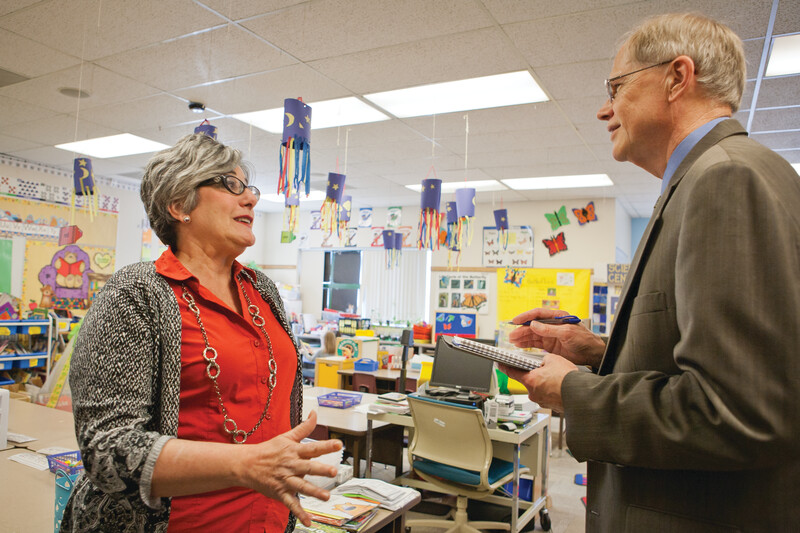I recall being a new teacher, attending one of my first faculty meetings, when we were informed that a budget surplus meant that each teacher in the district would get a $1,000 raise, effective immediately. I was elated!
It didn't take long, though, for reality to set in. As the meeting ended, I heard veteran teachers complaining about how unfair the $1,000 per person raise was because it meant a smaller percentage increase for someone at the top of the scale than it did for a new teacher.
"What's going on," I wondered, "when people are unhappy about getting an extra thousand dollars?"
That experience taught me an important lesson about leadership: No solution, not even an extra thousand bucks, will please everyone. If everyone is happy with you, chances are you're not doing your job well.
That point came up again years later when a college professor friend asked me whether I thought he should pursue a career in school administration. He was an excellent teacher and quite savvy about curriculum, but he was uncomfortable if anyone was unhappy with him. "Would this be a problem?" he asked me.
My answer came with no hesitation. "Yes," I replied, "definitely and absolutely." The reality is that a certain amount of confrontation and conflict is endemic in any administrative job. Change is never easy. There's always someone who is happy with things the way they are, thank you very much, just as there is always someone who is frustrated that we're not changing things quickly enough. And those someones have friends.
This leadership balancing act can be particularly hard in a school. Teachers try to create win-win scenarios for their students, and they work diligently to find solutions that work for every child. They often expect that principals should do the same for them (and truly, it's hard to argue with that logic). But principals cannot always create win-win scenarios for all their teachers; they need to be willing to take the heat when they make an unpopular decision. This is simply part of the territory; it comes with the job. But over time, even the strongest and most visionary leader becomes weary of conflict.
Granted, it is possible to reduce conflict by seeking consensus. Virtually every decision can be delegated to the group or a subgroup. By definition, consensus means that most people accept the decision; it's tolerated. That likely means, though, that no one is passionate about the decision and that the decision is neither adventurous nor dramatic. Consensus is like lukewarm vanilla ice cream, with no sauce. When we seek consensus, we may allow 20 or even only 10 percent of the group to veto any change. If we're waiting for everyone to get on the ship of school change, we'll never leave the dock.
Wise leaders appreciate the advantages of consensus, but they also know when it's time to say, "This is my decision and here's my rationale." The key is to know when to seek consensus and when to push the issue. Shared leadership doesn't mean principals abdicate making decisions; it does mean being thoughtful about who decides what.
I think of decisions as falling into three categories: Your decision, our decision, and my decision. "Your decisions" are those made by teachers. "Our decisions" are made collaboratively by teachers and administrators. And sometimes I make the call: It's "My decision."
Using the phrase "your decision, our decision, my decision" with my staff makes it easier for them to understand who's responsible for what, and this knowledge helps us work more effectively and efficiently. I note that pedagogy is a "your decision," for example. I need to be informed and be part of the discussion, but teachers decide. Student assignments are our decision; we work together. My decisions are those for which I am responsible. I raise trial balloons and elicit input, but it's my call. Teacher evaluations fall here.
Thinking about who decides what also helps me understand when I should work for consensus and when I should not. Which decisions fall where at your school, and when is seeking consensus not appropriate?








